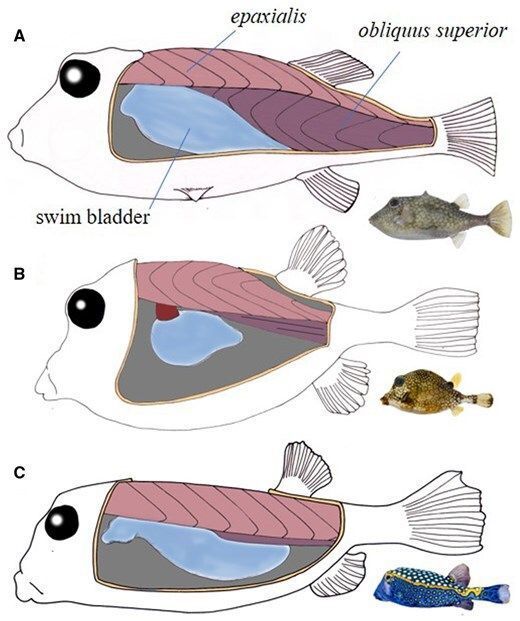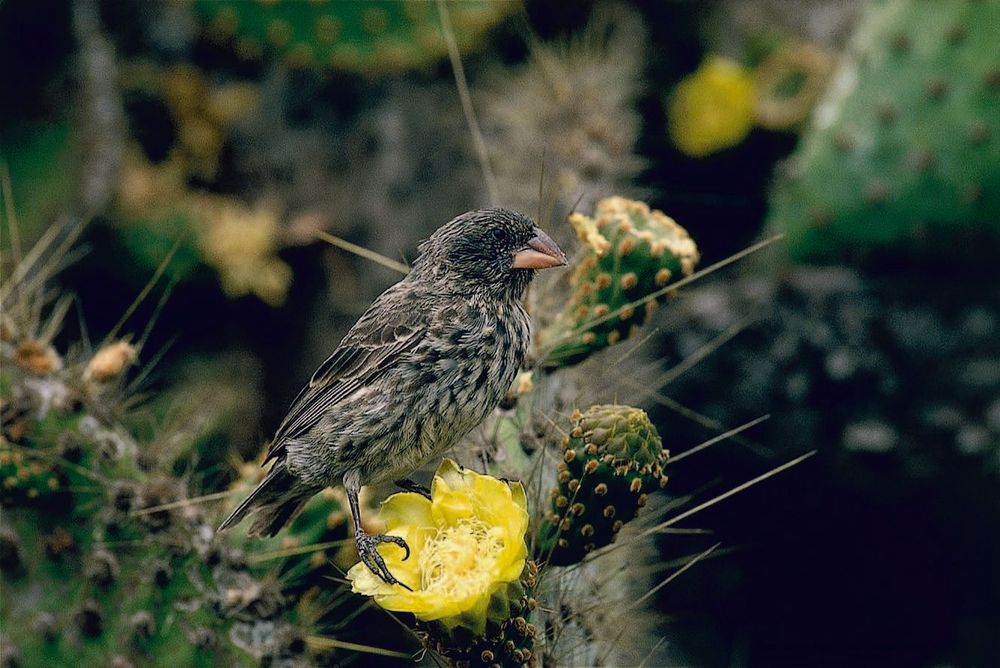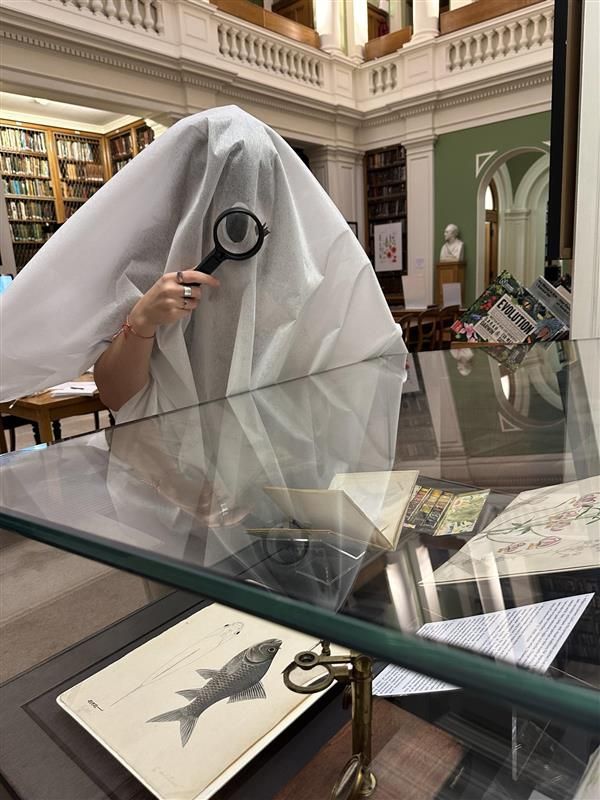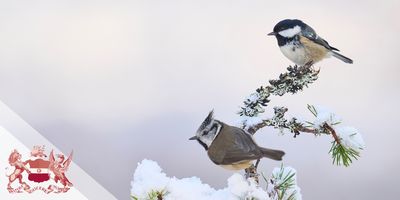
On the fifth day of Christmas, Linnaeus gave to me...FIVE ANOLES! Well, more like anoles adapting to temperature change in the Andes, as taught to us in this lunchtime lecture! Kicking off the journal series, it contributed to the 1000+ lecture attendees this year! 🌍🧪👇
buff.ly/Tgjn9Pk
05.12.2025 10:24 — 👍 5 🔁 3 💬 0 📌 0

Rapid divergence with gene flow creates intractable nodes in the tree of life: An empirical demonstration in the Buzzing Flowerpecker (Dicaeum hypoleucum)
Abstract. The avian tree of life contains a series of famously intractable nodes and controversial relationships whose resolution varies between studies de
We all know ornithologists loved naming birds, but less so trying to understand their evolutionary history...
Using the (perfectly named) Buzzing Flowerpecker as a case study, phylogenetic studies revealed rapid evolution & shared genes, making it difficult to draw boundaries...
02.12.2025 15:03 — 👍 11 🔁 5 💬 0 📌 0

Rafflesia arnoldii flower plate from Transactions of the Linnean Society, 1822.
Ahhh Rafflesia, the parasitic corpse flower...what's not to love? Known for their scent of rotting flesh, these Strange(r) Things can be found in the rainforests of South East Asia, and may remind you of a certain Demogorgon, henchmen of the upside down...
#StrangerThings #Demogorgon
27.11.2025 14:06 — 👍 9 🔁 2 💬 0 📌 3

I spy with my little eye, a brand new...butterfly?
Found hiding from Panama to Colombia, whole-genome sequencing uncovered this new species as part of the tribe Phocidini!
doi.org/10.1093/zool...
@linneansociety.bsky.social
26.11.2025 11:30 — 👍 18 🔁 4 💬 0 📌 0

What's that? You didn't know boxfish made sound? Me neither...
It turns out all species (Atlantic & Pacific) do, yet little is known about how this evolved. A novel structure found only in the Atlantic species offered the answer, but it isn't quite what you think...🌍 🧪
doi.org/10.1093/biol...
25.11.2025 08:30 — 👍 25 🔁 14 💬 0 📌 1

Weevil, weevil, rock you!
Not quite as catchy as the Queen hit, the phylogeny of broad-nosed weevils was explored using mitochondrial genomes of 130 species, helping to classify the subfamily & uncover their biogeography! 🌍👇🧪
doi.org/10.1093/zool...
@linneansociety.bsky.social
24.11.2025 11:01 — 👍 16 🔁 8 💬 1 📌 0

Phylogeny of Southeast Asian Mapania (Cyperaceae: Mapanioideae) using chloroplast sequence data
Abstract. Mapania (Cyperaceae) is a pantropical genus associated with the forest understorey. Its evolutionary history and species delimitation are poorly
The pantropical genus Mapania is associated with forest understorey, yet its evolutionary history & species delimitation are poorly known. Here, DNA sequence data was used to change this, highlighting the need for further research to better protect this genus! 🌍 🧪 👇
17.11.2025 09:45 — 👍 6 🔁 2 💬 0 📌 0

This #FossilFriday marvel at the presence of Astropanax leaves & pollen in Ethiopia 21.73 million years ago, found in the Mush Valley, providing the earliest evidence for Araliaceae on the African continent! (around the time when ancient rhinos & horses began to evolve)🌍🧪
doi.org/10.1093/botl...
14.11.2025 08:30 — 👍 23 🔁 9 💬 1 📌 1

Effective conservation relies on accurate research, monitoring & understanding of species. Here, the first comprehensive IUCN Red List assessment of the High Atlas vascular flora has been done, helping to uncover extinction threats to endemic flora! 🧪 🌍 👇
doi.org/10.1093/botl...
09.11.2025 11:01 — 👍 17 🔁 4 💬 0 📌 0

As Alphaville famously sang...hummingbird-pollinated Costus flowers appear to stay forever young, keeping their juvenile traits through paedomorphosis, whilst bee-pollinated ones do not! 🧪 🌍 👇
doi.org/10.1093/botl...
@linneansociety.bsky.social
@thiagojcandre.bsky.social
@cdspecht.bsky.social
07.11.2025 11:30 — 👍 9 🔁 1 💬 0 📌 0

Piper (no, not the magical man who tamed the rats) is the largest genus of Piperaceae & second largest angiosperm, yet its biogeography & global radiation still requires research. Here, phylogenetic analysis investigated divergence time, revealing it spread to mainland Africa twice! (1/2)🌍 🧪 👇
04.11.2025 17:35 — 👍 7 🔁 2 💬 1 📌 0

Are you as bromeli-MAD about bromeliads as us? Then you're in luck!
Following the success of our previous special issues, we're pleased to announce a new one on Bromeliaceae Evolution & Systematics! Keep an eye on our socials as we share papers over the next few weeks 🌍 🧪 👇
buff.ly/zVh5ORp
29.10.2025 10:01 — 👍 19 🔁 4 💬 0 📌 0

A common wombat peeks out over green grass in Australia
It's #WombatDay! Famed for their cubed poop, these guys have surprisingly similar forelimb myology to koalas...helping to unravel their evolutionary past! Read about it below 👇🌍🧪
doi.org/10.1093/zool...
@linneansociety.bsky.social
22.10.2025 15:47 — 👍 29 🔁 7 💬 1 📌 0

Darwin's Darwin finches (the island is called Darwin, that's not a typo) have been variably described as either two species, or combined into just one. But what's right? As part of our #SpecialIssue on Evolution on Islands, Peter & Rosemary Grant took to answering this...(1/2) 🌍🧪
17.10.2025 10:02 — 👍 13 🔁 7 💬 1 📌 0

Natural selection, rather than sexual selection, plays a dominant role in the formation of body coloration in Drosophila suzukii
Abstract. Drosophila suzukii is a globally distributed pest, and its body colour exhibits notable plasticity. Given the important roles of natural and sexu
Ahh, Drosophila suzukii, a global pest...and best dressed? Whilst fashion week is over, these guys really put the fly in fruit fly! Known for their body colour plasticity, the role of sexual vs natural selection on their colour diversity was investigated...check it out 👇🧪🌍🦟
16.10.2025 09:30 — 👍 10 🔁 5 💬 1 📌 0

Fruit structure and development in representatives of Iriarteeae (Arecaceae–Arecoideae)
Abstract. With the aim of determining the plesiomorphic fruit type of Arecaceae–Arecoideae, we conducted a developmental carpological study of all five gen
Ever wondered in hard and woody fruits (like a cherry pit) or soft, unspecialised, berry-like fruits are the ancestral fruit-type in Arecoidea tropical palms? Well, you're in luck! Check out this paper to unravel this mystery...🌍🧪
@linneansociety.bsky.social
15.10.2025 16:01 — 👍 8 🔁 1 💬 0 📌 0

Ants, Acacias, and Breaking the Mould of Niche Conservatism
Discover the latest news from The Linnean Society of London.
New Blog Day! 🐜📣
The acacia fruit doesn't fall far from the evolutionary tree in this new blog, written by guest blogger Josie Cooper! Ever wondered how plants defend themselves from plant-eating predators? In the case of swollen-thorn acacias, the answer is ants...a 🧵 (1/6) 🌍🧪
buff.ly/Sm4NQsQ
14.10.2025 16:15 — 👍 11 🔁 6 💬 1 📌 0

Are you a PhD student ready to publish a paper? Submit your research to our journal today & enter one of our new journal prizes, celebrating PhD student work in #Botany! 🧪🌍👇
academic.oup.com/botlinnean/p...
27.09.2025 09:30 — 👍 3 🔁 0 💬 0 📌 0

Who you gonna call? EVOLUTIONARY SCIENTISTS!
Ghost species (no, not species of ghost) are extinct, unknown & unsampled taxa...and they vastly outnumber those included in phylogenetics. This hidden diversity can complicate phylogenetic signals of horizontal gene flow, impacting their study...(1/2)🧪
19.09.2025 10:01 — 👍 18 🔁 5 💬 1 📌 1

As a Learned Society, our journals provide vital income that funds our charitable endeavours and community engagement. By reviewing for us, you give back to our community and contribute to our mission of creating a world where nature is understood, valued, and protected. (2/2)
17.09.2025 09:00 — 👍 1 🔁 0 💬 0 📌 0
It's #PeerReviewWeek and what better opportunity exists to say a huge thank you to our excellent reviewers from across the globe. It is your hard work & commitment that enables us to continue publishing ground-breaking research in Biology, Botany, Evolution and Zoology. (1/2)
17.09.2025 09:00 — 👍 2 🔁 0 💬 1 📌 0

How widespread is pollination by sexual deception of fungus gnats in Pterostylis (Orchidaceae)?
Abstract. Pollination by sexual deception has evolved multiple times in the Orchidaceae, with most known cases involving male Hymenoptera as pollinators. T
Did you know male wasps can get tricked by orchids into thinking they're females?
Pterostylis orchids use sexual deception as a pollination strategy, with fungus gnats (Diptera) falling victim, acting as the main pollinators of these deceptive plants! 🌍🧪👇
academic.oup.com/botlinnean/a...
16.09.2025 13:35 — 👍 17 🔁 10 💬 0 📌 2

Hybrid Day Meeting | Organismal Resilience in a Rapidly Changing World
Join us at the Linnean Society for a one-day symposium focused on the mechanisms and consequences of variation in organismal resilience
Speaker Spotlight!
Today we're sharing molecular biologist Glenn Yannic, whose research focuses on the consequences of environmental & anthropogenic changes on the genetic diversity of alpine & arctic species.
Book to see Glenn Nov 20 🌍🧪👇
buff.ly/bLADJcs.?mso...
11.09.2025 09:12 — 👍 6 🔁 5 💬 0 📌 0

Hybrid Day Meeting | Organismal Resilience in a Rapidly Changing World
Join us at the Linnean Society for a one-day symposium focused on the mechanisms and consequences of variation in organismal resilience
Speaker Spotlight! 📣
Today we're highlighting Chloe Haberkorn, a biologist who specialises in evolutionary genomics, currently in yeast! Her PhD focused on resistance mechanisms in bed bugs (scream).
Come see Chloe on Nov 20 🧪🌍👇
buff.ly/bLADJcsmsock...
@chloehbk.bsky.social
09.09.2025 09:12 — 👍 8 🔁 6 💬 0 📌 0

Diversity and leaflet anatomical characters evolution of Machaerium Pers. (Fabaceae – Faboideae)
Abstract. Taxonomic and phylogenetic studies of Machaerium species have demonstrated overlapping morphological characters that delimit sections and/or clad
Machaerium species morphological characters can help delimit sections or clades, such as the width or shape of their leaflets! Here, their morphoanatomical characters were studied to understand their usefulness for taxonomy & classification! Read more below 🌍🧪👇
07.09.2025 15:01 — 👍 0 🔁 0 💬 0 📌 0

Fathers Out Of The Blue: Leatherback Turtles Take a DNA Test
Discover the latest news from The Linnean Society of London.
New Blog Day! 📣
Who's your daddy? This is the question asked by guest blogger @katyakolesnykova.bsky.social, breaking down Gabriela Bispo & co's paper on leatherback turtle mating systems! A long-time mystery, DNA analysis revealed a surprising truth 🌍🧪👇 A 🧵 (1/6)
buff.ly/iVBnhAO
05.09.2025 16:55 — 👍 12 🔁 7 💬 1 📌 1
Oryx—The International Journal of Conservation publishes leading research on biodiversity, conservation practice & the socio-economic dimensions of conservation 🌎 https://linktr.ee/oryxthejournal
Create and share social media content anywhere, consistently.
Built with 💙 by a global, remote team.
⬇️ Learn more about Buffer & Bluesky
https://buffer.com/bluesky
The official account for Oxford Academic, featuring Oxford University Press's academic news and insights.
Tropical community ecologist & conservationist; diet, functional ecology, mountains, fires & global change | WRF Postdoc @UW @SESantana | Co-Founder SMACON | Pritzker EEG/Whitley/FFN laureate | Saving 🦇forests and livelihoods in 🌍| she/her
🌱 Explorer of sophistication within the simplicity of nature's smallest wonders
🔬 #Bryophyte #Systematics @FlagLab.bsky.social
🎓 Professor @unicomplutense.bsky.social
🏳️🌈 He/Him rafamedina.com
Sharing the art of scientific learning! 🌍💡
Courses, coaching, and events to connect researchers in life & earth sciences. We want to empower collaboration, equity, & innovation.
#TScourses #KeepLearning
UK orchid conservation charity | The Brickell Award 2024 | RHS Gold medal winners 🏆| #🌿Six National Collections of orchids | 📍West Sussex, UK
Personal account. Botanist. #TropicalBotany. 🌴 Author of "A Gardener's Guide to Botany.” 🐶 Henry's 2nd favorite dad. IG: Scott.Zona. Posting from North Carolina, USA. Trapped in Trumpistan. #IamaBotanist
Concordia University & Canada Research Chair in Spatial Ecology & Biodiversity. Editor-in-Chief of Oikos @oikosjournal.bsky.social; Fellow of ESA; quantitative & community ecology (empirical and theoretical), drummer, cook & multilingual 🇧🇷🇨🇦
One of the leading peer-reviewed journals in ecology, owned by the @nordicoikos.bsky.social. Publishes research papers where different aspects of ecology are brought together.
An open-access outlet for empirical/theoretical work in macroecology and biogeography. Research published in Ecography strives to understand ecological or biodiversity patterns through space and time. Ecography is owned by @nordicoikos.bsky.social
OA journal publishing the best work in evolutionary biology. Jointly owned by ESEB & SSE, published by Oxford University Press.
Journal website: https://academic.oup.com/evlett
Mastodon: @EvolLetters@ecoevo.so
Evolution publishes articles in evolutionary biology focused on evolutionary phenomena and processes at all levels of biological organization. Evolution is owned by the Society for the Study of Evolution and is published by Oxford University Press.
#societyjournal (ESEB), covering #evolution across all organisms
#genetics #genomics #selection #lifehistory #evodevo #popgen #theory #speciation #morphometrics #phylogenetics #phylogeography
https://academic.oup.com/jeb
http://jevbio.net
The American Naturalist, scholarly journal of evolutionary biology and ecology, pioneer of Open Data, affiliated with American Society of Naturalists and our nonprofit publisher (UChicago Press). All articles are Green Open Access compatible.
Journal of Ecology, A @britishecologicalsociety.org journal, publishing original plant ecology research for a global audience
Journal of Animal Ecology publishes the best #AnimalEcology research that develops, tests and advances broad ecological principles. A @britishecologicalsociety.org journal.
A @britishecologicalsociety.org journal, publishing papers that significantly advance the field of ecology, including physiological, behavioural and evolutionary ecology.
Diamond open access journal publishing about ecology and evolution of all plant groups, and with a particular interest in (sub)tropical African biodiversity. https://plecevo.eu/
Journal of Experimental Biology is the leading journal in comparative physiology




























